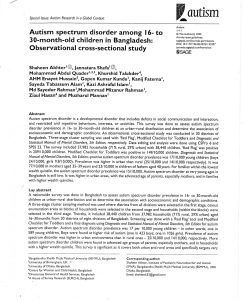
What is Williams syndrome?
Williams syndrome is a rare genetic condition (estimated to occur in 1/10,000 births) which causes medical and developmental problems. Williams syndrome was first recognized as a distinct entity in 1961. It is present at birth, and affects males and females equally.
What are the common features of Williams syndrome?
Characteristic facial appearance
Most young children with Williams syndrome are described as having similar facial features. These features which tend to be recognized by only a trained geneticist or birth defects specialist include a small upturned nose, long philtrum (upper lip length), wide mouth, full lips, small chin, and puffiness around the eyes. Facial features become more apparent with age.
Heart and blood vessel problems
The majority of individuals with Williams syndrome have some type of heart or blood vessel problem. Typically, there is narrowing in the aorta (known as aortic stenosis), or narrowing in the pulmonary arteries. There is a broad range in the degree of narrowing, ranging from trivial to severe (requiring surgical correction of the defect).
Since there is an increased risk for development of blood vessel narrowing or high blood pressure over time, periodic monitoring of cardiac status is necessary.
Hypercalcemia (elevated blood calcium levels)
Some young children with Williams syndrome have elevations in their blood calcium level. The true frequency and cause of this problem is unknown. When hypercalcemia is present, it can cause extreme irritability or “colic-like” symptoms. Occasionally, dietary or medical treatment is needed.
In most cases, the problem resolves on its own during childhood, but lifelong abnormality in calcium or Vitamin D metabolism may exist and should be monitored.
Low birth-weight / low weight gain
Most children with Williams syndrome have a slightly lower birth-weight than their brothers or sisters. Slow weight gain, especially during the first several years of life, is also a common problem and many children are diagnosed as “failure to thrive“. Adult stature is slightly smaller than average.
Feeding difficulties
Many infants and young children have feeding problems. These problems have been linked to low muscle tone, severe gag reflex, poor suck/swallow etc.
Feeding difficulties tend to resolve as the children get older.
Irritability (colic during infancy)
Many infants with Williams syndrome have an extended period of colic or irritability. This typically lasts from 4 to 10 months of age, then resolves. It is sometimes attributed to hypercalcemia. Abnormal sleep patterns with delayed acquisition of sleeping through the night may be associated with the colic.
Dental Abnormalities
Slightly small, widely spaced teeth are common in children with Williams syndrome. They also may have a variety of abnormalities of tooth shape or appearance.
Most of these dental changes are readily amenable to orthodontic correction.
Kidney abnormalities
There is a slightly increased frequency of problems with kidney structure and/or function.
Hernias
Inguinal (groin) and umbilical hernias are more common in Williams syndrome than in the general population.
Hyperacusis (sensitive hearing)
Children with Williams syndrome often have more sensitive hearing than other children; Certain frequencies or noise levels can be painful and/or startling to the individual.
This condition often improves with age.
Musculoskeletal problems
Young children with Williams syndrome often have low muscle tone and joint laxity. As the children get older, joint stiffness (contractures) may develop.
Physical therapy is very helpful in improving muscle tone, strength and joint range of motion.
Overly friendly (excessively social) personality
Individuals with Williams syndrome have a very endearing personality. They have a unique strength in their expressive language skills, and are extremely polite. They are typically unafraid of strangers and show a greater interest in contact with adults than with their peers.
Developmental delay, learning disabilities and attention deficit:
Most people with Williams syndrome have some degree of intellectual handicap. Young children with Williams syndrome often experience developmental delays; milestones such as walking, talking and toilet training are often achieved somewhat later than is considered normal. Distractibility is a common problem in mid-childhood, which appears to get better as the children get older.
Older children and adults with Williams syndrome often demonstrate intellectual “strengths and weaknesses.” There are some intellectual areas (such as speech, long term memory, and social skills) in which performance is quite strong, while other intellectual areas (such as fine motor and spatial relations) are significantly deficient.




 IPNA wants to create a world where children with developmental disabilities and their parents can get their questions answered and their needs met in a caring environment.
IPNA wants to create a world where children with developmental disabilities and their parents can get their questions answered and their needs met in a caring environment.